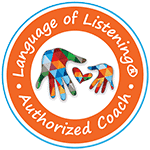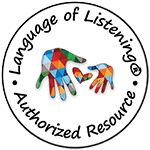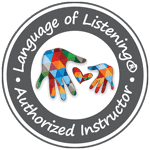Inside this post: Positive parenting for kids begins with a simple, yet genius 3-part coaching method that will help you learn how to make kids listen and keep a peaceful home. Post contains affiliate links.
My son started at a new school for the very first time and his anxiety was so powerful, it was as if he crashed straight into a brick wall of emotion, splattering feelings everywhere.
Each morning as he used his printable daily schedule for kids and we prepared leave for school, he would turn into a complaining child protesting his fate, which turned into clinging to my leg for dear life.
I’d finally get him calmed down and into the car, but mid-way through the drive, the alligator tears would start. And by the time we arrived at the school, he was sobbing uncontrollably into his hands.
His school anxiety consumed him.

It was so bad that he would sit in a chair facing the school’s entryway door for 6 hours waiting for me to return.
For 6 hours, his emotions paralyzed him.
For 6 hours, he couldn’t bring himself to do anything but sit and wait for it all to be over. At home he thrived on all of our tricks for independent kids, but at school he was really struggling.
My husband I would lay in bed next to each other at night trying to brainstorm ways to help our son cope with this big life change. We felt the school was a positive, safe and inclusive place. We loved the teachers and their approach with the kids. Other parents, who sent their kids to the school, also validated our thoughts on this.
After spending many late nights thinking it through, we decided that the best solution was to continue coaching and helping our son through this big life change. As difficult as it was, this was a struggle our child needed to learn to cope with and overcome. But how?
Traditional methods didn’t work.
In the midst of all his tears, I desperately wanted to say things like…
“You’re fine!”
“You LOVE school!”
“Don’t worry so much!”
“This is no big deal!”
But after doing my research, I knew those sayings weren’t the positive discipline approach that would bring success. They only made his anxiety worse.
Those phrases were like trying to close an overstuffed suitcase by sitting on it. No matter how hard you try to shove everything back in the suitcase, it just oozes out somewhere else.
Related: How to Help a Child Focus in the Classroom – 5 Things Parents Can Do

If we didn’t find a way to help him face his anxiety head-on, it was going to spill over into other areas like tantrums at bedtime or public meltdowns at the grocery store.
The 3-part parenting method that changed everything.
About a year ago, I came across a 3-part parenting method that sounded too good to be true, and it came at the precise moment I need it.
It’s a brilliant 3-step coaching method called Language of Listening®, and it gave our family the tools we needed to help our son through is anxiety.
In all honesty, the part I love most about this 3-step method is that it’s positive discipline for kids of all ages and stages. Every time I feel stumped in parenting, this is the one thing that always brings our family back to a place of peace.
After reading the book, I put it into practice immediately.
Here is a brief overview of the 3-steps:
1. SAY WHAT YOU SEE®.
Using objective observations, describe the what the child is doing, saying, feeling or thinking without questions, teaching, fixing or judgement. Get down to the child’s level and simply describe exactly what you SEE.
The beautiful part about this step is that you need not know ahead of time what you will say. Everything you need to SAY WHAT YOU SEE® (SWYS) is right there in front of you.
This step is crucial because it immediately allows you and your child to connect and understand eachother.
Before school I would say things like…
- “Looks like you feel really unsure about going to school today.”
- “You don’t want to go to school. You’re upset and you’re crying. This is hard for you.”
- “You wish you could stay home with me all day long.”
2. If you see something you don’t like, name a CAN DO.
There is always something the child CAN DO in every situation. Your parenting boundaries are like walls; they are what they are. But in order to help kids cooperate, you need to flip the situation from negative to positive.
Offering a CAN DO gives kids a sense of control when they feel very out of control with emotions and decisions.
Before school I offered lots of CAN DOs…
- “You can take something with you to help you feel safe.”
- “You can choose the lunch you want to take today.”
- “You can choose the clothes you wear today.”
- “You can walk into school or get a piggy-back ride.”
3. If you see something you do like, name a STRENGTH.
When your child does something well, go ahead and name those STRENGTHs. Children act in accordance with who they believe they are.
The more you point out the STRENGTHs in your child, the more they will believe that is who they are, and the more they will show you those STRENGTHS.
Before school I would say things like…
- “You calmed yourself enough to walk into school. That shows you’re in control of your feelings.”
- “You choose three special things to take with you to school today. You know how to help yourself feel safe.”
After school was my golden time to really drive home his strengths because he accomplished something HUGE by getting through the day.
I would say things like…
- “Wow. You got through the whole day at school. That was so hard for you, but you found a way stay calm. That shows you’re patient!”
- “Wow! You conquered another day of school. That shows you know how to overcome challenges!”
- “This morning you knew exactly how to express all your emotions. You handled that!”
Here’s what happened next.
After we first started using Language of Listening, my son was immediately able to go between the chair to the classroom on and off throughout the day. It took a few weeks for my him to stop sitting in the chair completely, but we knew it was a process. Anxiety doesn’t turn off overnight. We stuck with Language of Listening, hoping that our consistent coaching would help him over come this challenge.
And, we were right.
It did work.
Slowly but surely, he joined into the classroom and participated throughout the day. It’s been almost a year since he started at his new school, and it’s crazy to think that he skips gleefully through the door each morning. He loves his teachers and peers.

This is the best part.
He knows when he’s scared, angry, anxious, happy, excited etc. and most of the time he’s able to share what he’s feeling before he loses control.
We loved Language of Listening® so much that we allowed it to “spill” over into every area of our parenting, making positive discipline for kids a whole lot easier on us.
We used it during the difficult toddler and newborn phase, when teaching our toddler to follow a routine without reminders and during temper tantrums.
But more important than anything, it allowed me to help my child when I felt helpless.
Whoever said parenting doesn’t come with a manual was wrong…
…It’s right here.
Want more on parenting?
- 2 Year-Old Not Listening? Try This Remarkable Tip
- What No One Tells You About Parenting Toddler Boys
- 8 Remarkable Phrases to Help You Raise a Grateful Child
- Stay-at-Home Mom Gift Ideas: 7 Ways to Make Her Day
I've created a free email series just for you! If you are struggling with teaching your child to listen, this series will help transform your parenting. Yes, really. I've seen my proven strategies work time and time again for parents. I know it can work for you too.
After taking my free email series, you will:
- Learn simple, yet highly effective listening strategies
- Experience a stronger connection with your child
- Enjoy more peaceful parenting days
- Gain more cooperation from your child














Thank you for this, I figured this out the hard way with my daughter who is 6 and for two years has refused to go to school. This is so great I really really appreciate everything you do.
Thank you so much. I’d love to hear if this helps!